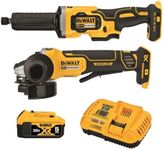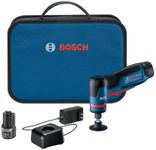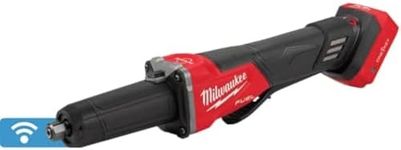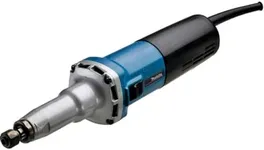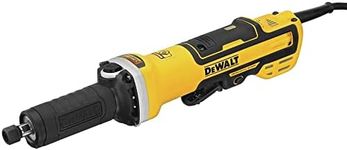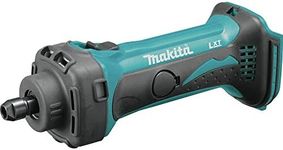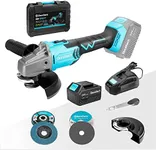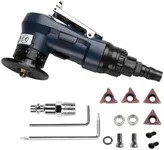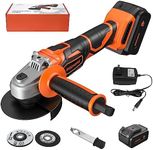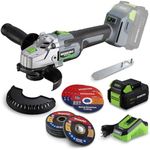Buying Guide for the Best Electric Die Grinders
Choosing the right electric die grinder can make a significant difference in the quality and efficiency of your work. Whether you're a professional or a DIY enthusiast, understanding the key specifications of electric die grinders will help you make an informed decision. Here are the main factors to consider when selecting an electric die grinder that best fits your needs.Power (Wattage)Power, measured in watts, indicates the strength of the grinder's motor. Higher wattage means more power, which is essential for heavy-duty tasks and prolonged use. For light tasks such as polishing or light grinding, a lower wattage (around 200-300 watts) may suffice. For more demanding tasks like cutting or heavy grinding, look for a grinder with higher wattage (400 watts and above). Consider the type of work you'll be doing most often to determine the appropriate power level.
Speed (RPM)Speed, measured in revolutions per minute (RPM), determines how fast the grinder's bit spins. Higher RPMs are suitable for tasks that require precision and fine detail, such as engraving or polishing. Lower RPMs are better for heavy material removal and cutting. Variable speed grinders offer the flexibility to adjust the speed according to the task, making them a versatile choice. If you need a grinder for a variety of tasks, opt for one with variable speed settings.
Collet SizeThe collet size refers to the diameter of the tool bit that the grinder can accommodate. Common sizes are 1/4 inch and 1/8 inch. A 1/4 inch collet is suitable for larger, more robust bits used in heavy-duty applications, while a 1/8 inch collet is ideal for smaller, more precise bits. Choose a collet size based on the type of bits you plan to use most frequently. Some grinders come with interchangeable collets, offering greater flexibility.
ErgonomicsErgonomics refers to how comfortable and easy the grinder is to handle. Look for features such as a lightweight design, comfortable grip, and easy-to-reach controls. A well-designed grinder reduces fatigue and increases control, especially during extended use. If you plan to use the grinder for long periods, prioritize models with ergonomic features to ensure comfort and efficiency.
DurabilityDurability is crucial for ensuring the longevity of your grinder. Look for models made with high-quality materials and robust construction. Features like a metal housing, sealed bearings, and overload protection can enhance durability. If you expect to use the grinder frequently or in demanding environments, investing in a durable model will save you money and hassle in the long run.
Noise LevelNoise level is an important consideration, especially if you will be using the grinder in a shared or noise-sensitive environment. Quieter models are more comfortable to use and reduce the risk of hearing damage. Check the decibel (dB) rating of the grinder; lower dB values indicate quieter operation. If noise is a concern, look for grinders specifically designed to operate quietly.
Accessories and AttachmentsAccessories and attachments can significantly enhance the versatility of your grinder. Common accessories include different types of bits, sanding discs, and polishing pads. Some grinders come with a variety of attachments, while others may require you to purchase them separately. Consider the types of tasks you'll be performing and ensure the grinder you choose is compatible with the necessary accessories.

